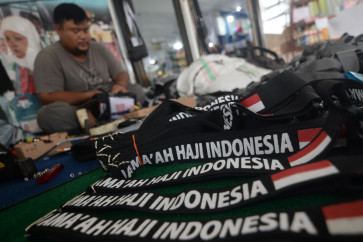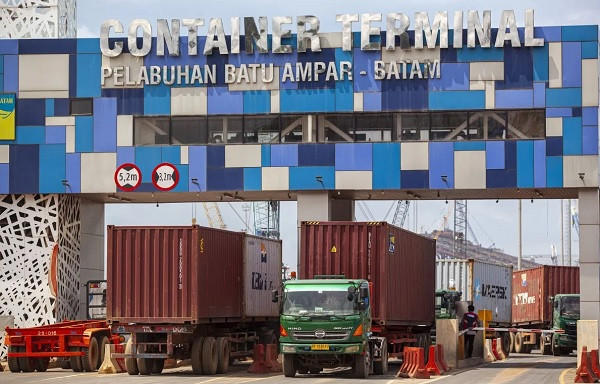The economy in 2024: Growth on weakening fundamentals
China’s economic growth will slow down to 4.6 percent in 2024, and then to 4.2 percent in 2025, meaning China can no longer be expected to be the main driver of Indonesia’s export growth.
Change text size
Gift Premium Articles
to Anyone
 Economic machine: Smoke billows out of chimneys on July 28, 2023 at the nickel mine operated by PT Vale Indonesia in Sorowako, South Sulawesi. Indonesia acquired the company through a divestment mechanism earlier this year. (AFP/Hariandi Hafid )
Economic machine: Smoke billows out of chimneys on July 28, 2023 at the nickel mine operated by PT Vale Indonesia in Sorowako, South Sulawesi. Indonesia acquired the company through a divestment mechanism earlier this year. (AFP/Hariandi Hafid )
I
ndonesia's gross domestic product (GDP) growth of 5.1 percent in the first quarter of 2024 shows that the country has been successful in navigating the macroeconomic fallout from global shocks. Growth has remained resilient and strong. Indonesia has maintained year-on-year (yoy) growth above 5 percent for nine consecutive quarters.
Nevertheless, the end of the commodity cycle boom, high global interest rates and the prospect of slowing global trade as a result of geopolitical tensions are causing strong headwinds going forward and limiting the space for high-growth macroeconomic policy.
Several macroeconomic indicators in the first quarter have indicated that even to reach growth of 5 percent this year would be challenging.
Government tax collection remained weak, contracting by 8.8 percent yoy in the first quarter to Rp 394 trillion (US$25.4 billion), mainly due to a 16 percent drop in value-added and luxury sales tax receipts. The primary balance surplus was Rp 122 trillion but the ultimate fiscal balance surplus was only Rp 8 trillion.
This means the government has spent Rp 114 trillion for paying interest on its debts, 14 percent higher than in the first quarter of 2023, though the outstanding government bonds (SBN) only increased 3.7 percent. This shows that higher borrowing costs have started to bite into the government’s finances.
Non-tax revenues will likely be lower in 2024, as commodity prices softened and dividend payments from state-owned enterprises (SOEs) are lower. Net profits of SOE blue chips in financial and telecommunication services were substantially lower in the first quarter of this year. For instance, the net profits of Bank Rakyat Indonesia (BRI) and Bank Mandiri only increased 2.7 percent and 1.4 percent, respectively, in this year's first quarter after a profit gain of 17.5 percent and 33.7 percent in 2023. PT Telkom’s net profit also fell 7.1 percent.
The Indonesian manufacturing sector, the largest sector in the GDP, is not in a good shape either. Its growth continued to weaken. In the first quarter it grew only 4.1 percent, down from 4.9 percent in 2022 and 4.5 percent in 2023. Some manufacturing industries have faced declining demand and sales. Car and motorcycle sales have declined and cement factories are working at 50 percent capacity. Textile and footwear factories have laid off hundreds of thousands of workers, as export demand falters and higher minimum wages have been legally increased.


















